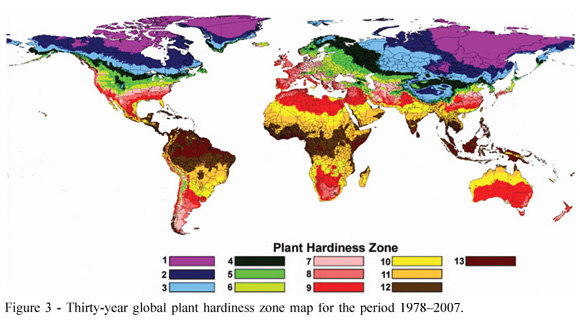Plant hardiness zones are widely used for selection of perennial plants and for phytosanitary risk analysis. The most widely used definition of plant hardiness zones (United States Department of Agriculture National Arboretum) is based on average annual extreme minimum temperature. There is a need for a global plant hardiness map to standardize the comparison of zones for phytosanitary risk analysis. Two data sets were used to create global hardiness zones: i) Climate Research Unit (CRU) 1973-2002 monthly data set; and ii) the Daily Global Historical Climatology Network (GHCN). The CRU monthly data set was downscaled to five-minute resolution and a cubic spline was used to convert the monthly values into daily values. The GHCN data were subjected to a number of quality control measures prior to analysis. Least squares regression relationships were developed using GHCN and derived lowest average daily minimum temperature data and average annual extreme minimum temperatures. Error estimate statistics were calculated from the numerical difference between the estimated value for the grid and the station. The mean absolute error for annual extreme minimum temperature was 1.9ºC (3.5ºF) and 2/3 of the stations were classified into the correct zone.
climate; plant diseases; minimum temperature






